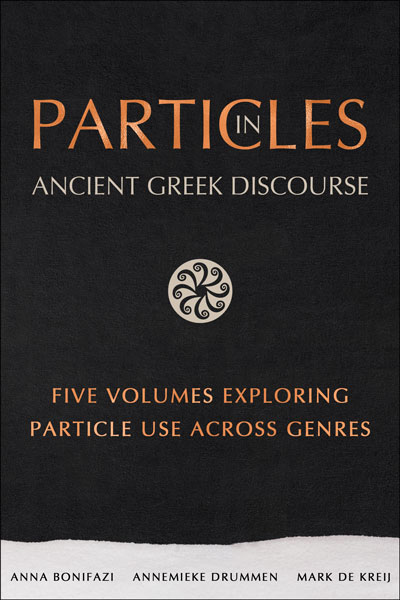-
Particles in Ancient Greek Discourse
Authors' Note
Table of Contents
Acknowledgments
I.1 General introduction
I.2 From σύνδεσμοι to particulae
I.3 Approaches to particles and discourse markers
I.4 General conclusions
I.5 Particle frequencies in Homer, Pindar, Aeschylus, Sophocles, Euripides, Aristophanes, Herodotus, and Thucydides
I.6 Bibliography
I.7 Particle index
I.8 Index locorum
II.1 Introduction
II.2 Discourse acts: The domain of particle analysis
II.3 Moves: Particles at discourse transitions
II.4 Discourse Memory: The negotiation of shared knowledge
II.5 Particles and Anaphoric Reference: A discourse perspective on particles with third-person pronouns
III.1 Introduction
III.2 Varying one’s speech: Discourse patterns
III.3 Reusing others’ words: Resonance
III.4 Speaking in turns: Conversation Analysis
III.5 Reflecting emotional states of mind: Calmness versus agitation
IV.1 Introduction
IV.2 Multifunctionality of δέ, τε, and καί
IV.3 Discourse segmentation
IV.4 Tracking voice and stance
IV.5 Analysis of four excerpts
V Online Repository of Particle Studies
To cite this work:
Bonifazi, Anna, Annemieke Drummen, and Mark de Kreij. 2016. Particles in Ancient Greek Discourse: Exploring Particle Use across Genres. Hellenic Studies Series 79. Washington, DC: Center for Hellenic Studies.



